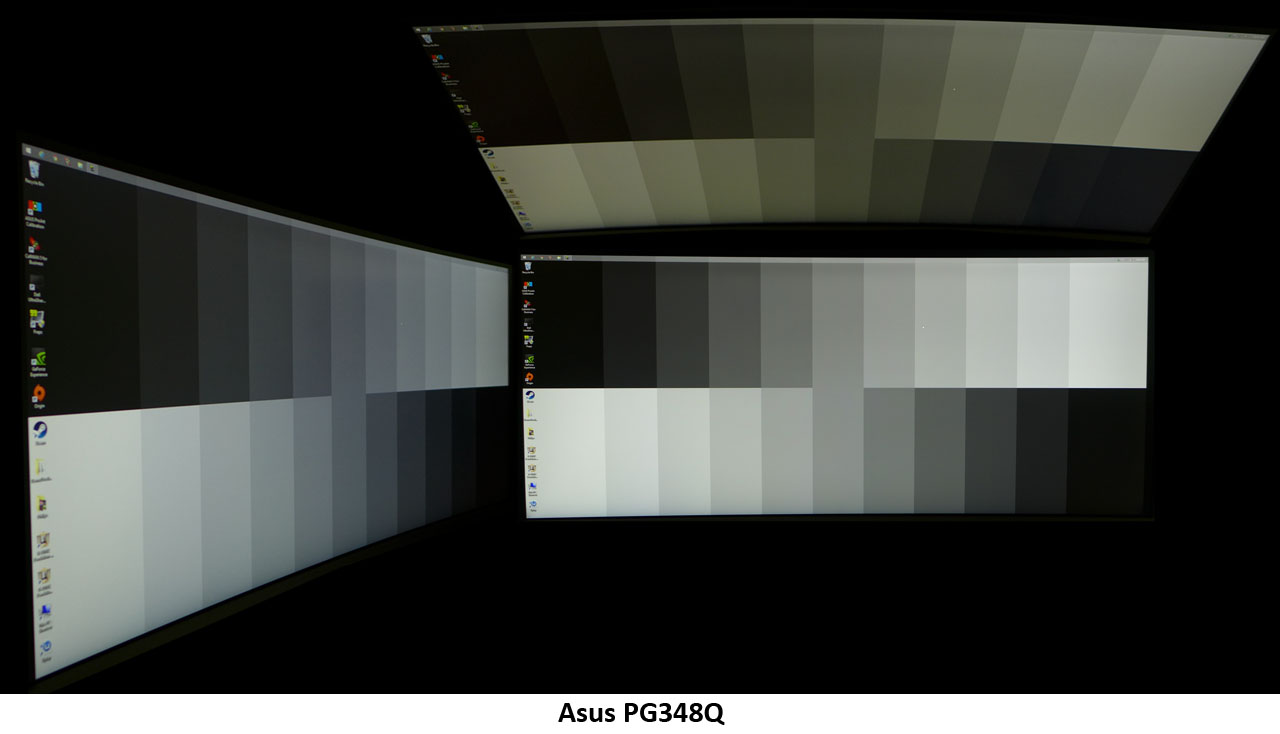Asus ROG PG348Q 34-inch Curved G-Sync Monitor Review
Asus adds to its premium Republic of Gamers line with the curved ultra-wide PG348Q. It sports a color-accurate IPS panel at 34" diagonal, with 3440x1440 resolution, G-Sync, and a 100Hz refresh rate. We’re checking it out today.
Why you can trust Tom's Hardware
Viewing Angles, Uniformity, Latency & G-Sync
To learn how we measure screen uniformity, please click here.
The PG348Q’s viewing angles are pretty typical for an IPS panel. Curved monitors are a little harder to photograph, but compared to their flat cousins, we’re seeing much the same result from our various review subjects. The white point runs a little cool to the sides, and output is reduced by around 50% at 45°. From the top, things turn decidedly green and output is reduced even more, close to 80%. Shadow detail holds up well, however, and it is this that separates IPS from TN, and even AMVA to some extent.
Screen Uniformity
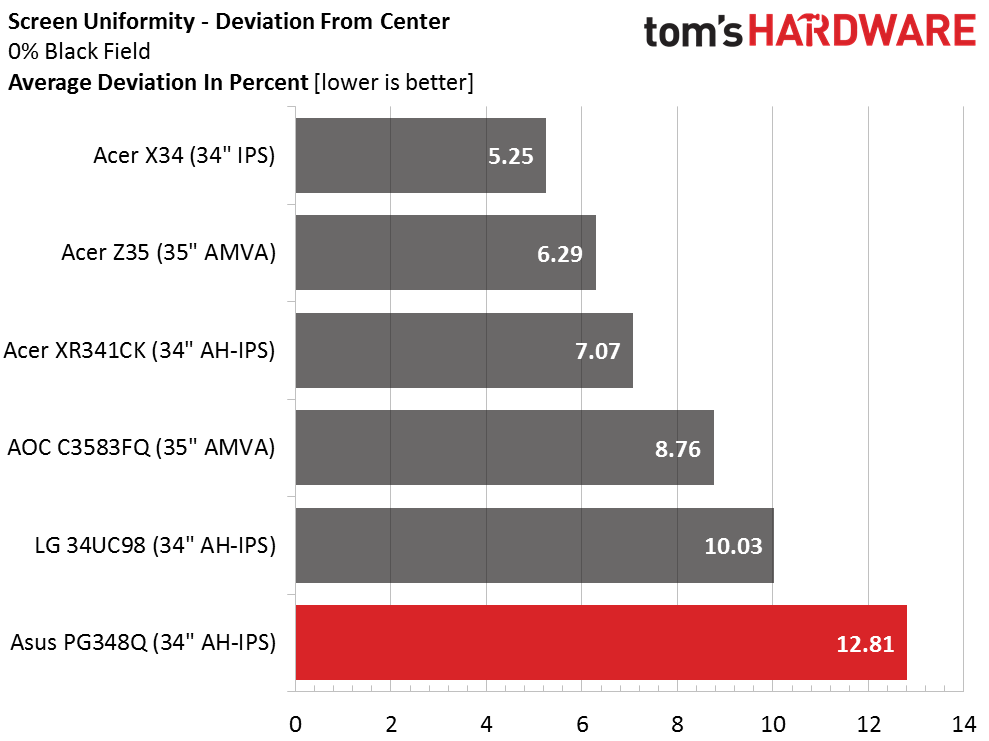
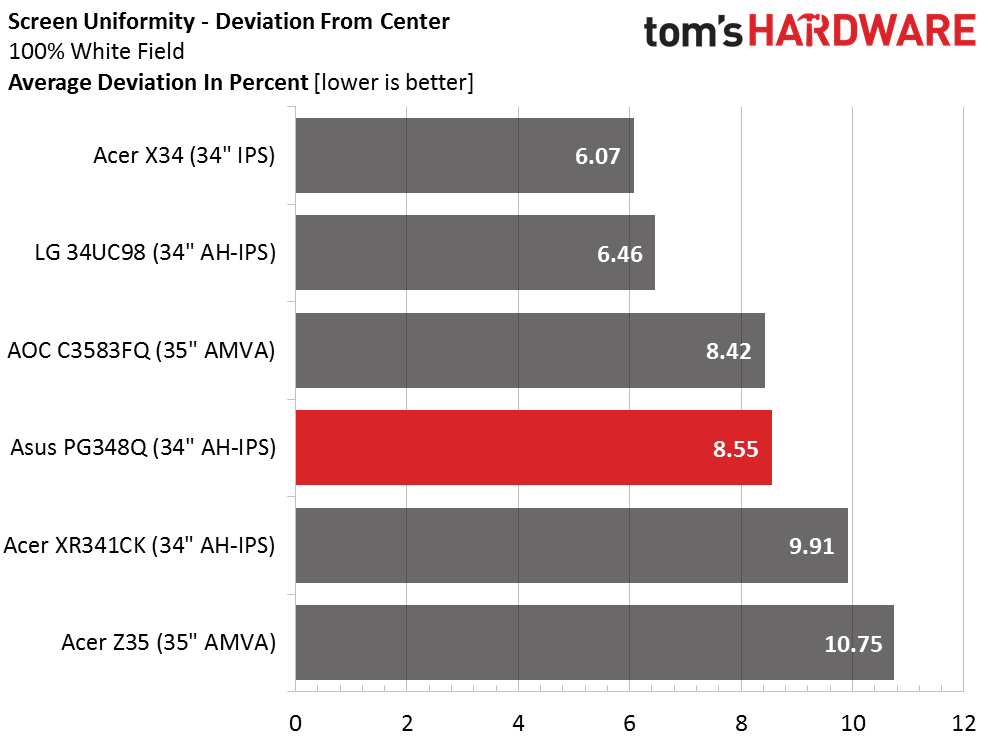
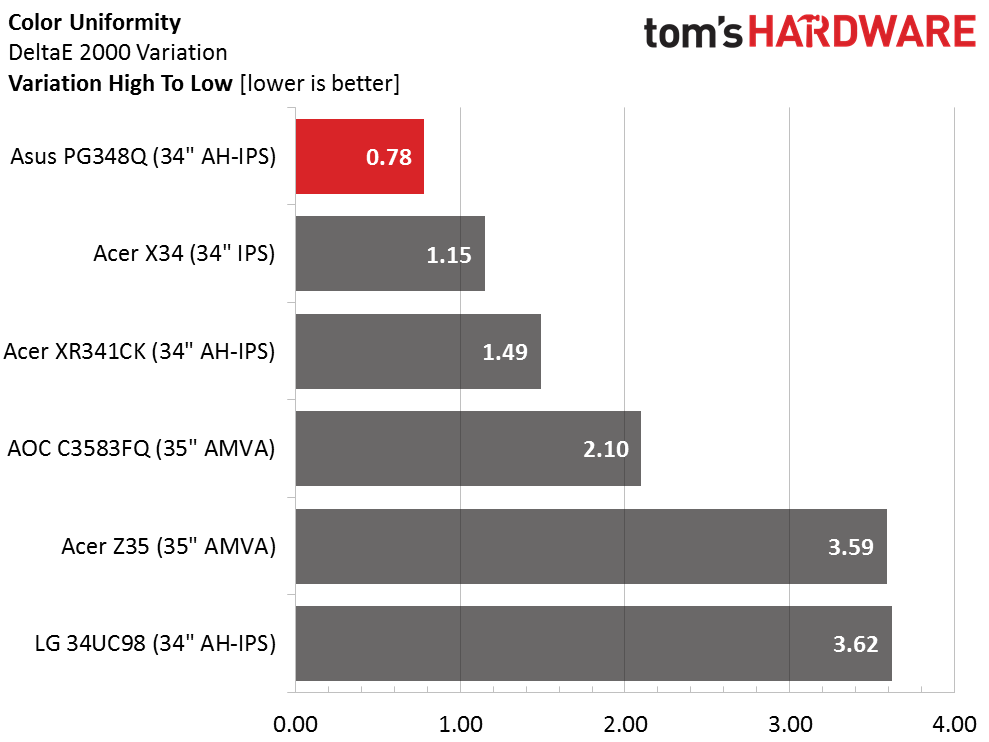
Our sample has a slight hot zone along the bottom of the screen, although it wasn’t enough to be visible in real-world content. And it only affected our black field result. The white field test placed the PG348Q squarely in the middle of the group and right at the average value for all the monitors we’ve tested to date. The color uniformity result, however, is one of the very best we’ve recorded. Our eyes showed us nothing but a perfectly-smooth tone, and it seems our i1 Pro spectrophotometer agrees with that assessment.
Pixel Response And Input Lag
Please click here to read up on our pixel response and input lag testing procedures.
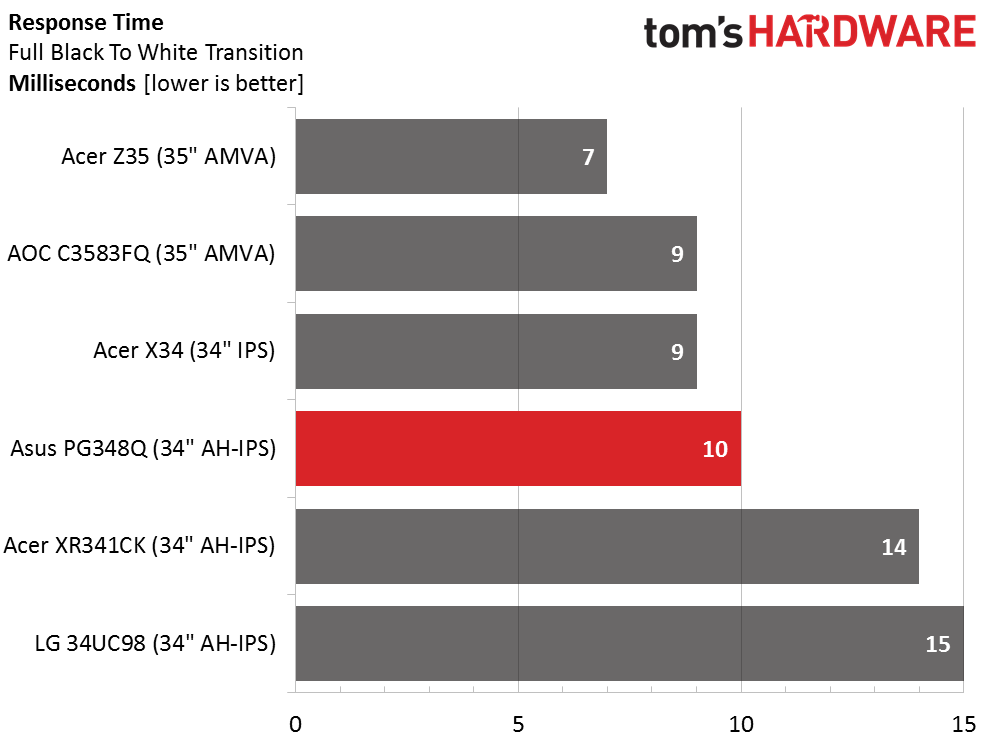
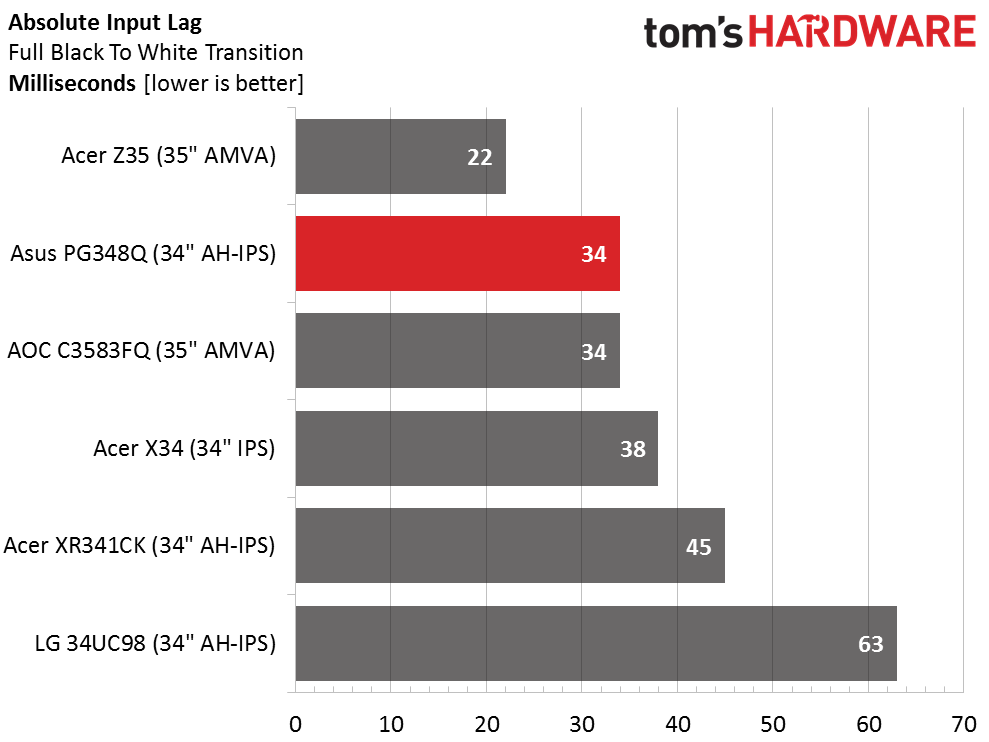
It seems there is a point of diminishing returns when it comes to refresh rates, because our 100Hz PG348Q performed on par with the 160Hz C3583FQ. The screen draw time is only one millisecond slower, and the input lag result is the same. Only the Z35 appears to have a significant advantage, probably due to its 200Hz max refresh. Since 100fps is at or near the ceiling for most video cards in most games, there might not be a compelling reason to pay more for higher speed, at least not yet. For now, 100Hz looks to be more than adequate for smooth motion and excellent gameplay.
Gaming With G-Sync
The PG348Q’s G-Sync range goes down to 30Hz and our sample happily overclocks to 100Hz, so we have a wide window of performance to use here. We maintain a goal of 40fps minimum in all our gaming tests, so detail levels have to be adjusted accordingly. Fortunately our GTX Titan X system still provides more than enough processing power to drive our usual suite consisting of Far Cry 4, Battlefield 4, and Tomb Raider.
Far Cry 4 works reasonably well on Ultra detail, maintaining framerates around 40fps. Decreasing the setting adds about 10fps and has little impact on image quality. Since we couldn’t get the action below 30fps, there was no issue with G-Sync. It was always working. Motion blur was present but not too distracting with overdrive set to Normal. Extreme produces ghosting that definitely takes you out of the gaming experience. We set the max refresh to 100Hz of course but never got close to that speed during play.
Get Tom's Hardware's best news and in-depth reviews, straight to your inbox.
Tomb Raider and Battlefield 4 place far fewer demands on the system, and even at the max detail settings, we were able to hit 70fps and higher. The added smoothness is noticeable and really makes you feel connected with every mouse movement, with no perceptible lag. In fact, both games almost seemed to anticipate our control inputs. G-Sync kept tearing at bay in all instances, and overdrive still worked best on its Normal setting.
While a FreeSync monitor will cost less, the lower operational limits of G-Sync offer an advantage, especially in more demanding games like Far Cry 4. Playing at 3440x1440 requires more processing power for sure, so if you want the curved ultra-wide experience with a less-expensive video card, one of the AMVA displays we’ve profiled might be a better fit. The PG348Q definitely hits its sweet spot when you have more power under the hood.
Current page: Viewing Angles, Uniformity, Latency & G-Sync
Prev Page Grayscale, Gamma And Color Next Page Conclusion
Christian Eberle is a Contributing Editor for Tom's Hardware US. He's a veteran reviewer of A/V equipment, specializing in monitors. Christian began his obsession with tech when he built his first PC in 1991, a 286 running DOS 3.0 at a blazing 12MHz. In 2006, he undertook training from the Imaging Science Foundation in video calibration and testing and thus started a passion for precise imaging that persists to this day. He is also a professional musician with a degree from the New England Conservatory as a classical bassoonist which he used to good effect as a performer with the West Point Army Band from 1987 to 2013. He enjoys watching movies and listening to high-end audio in his custom-built home theater and can be seen riding trails near his home on a race-ready ICE VTX recumbent trike. Christian enjoys the endless summer in Florida where he lives with his wife and Chihuahua and plays with orchestras around the state.
